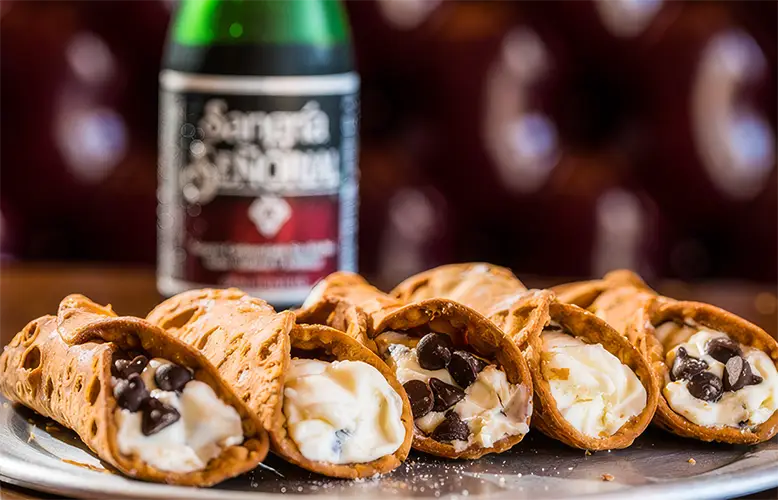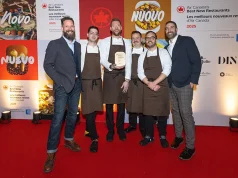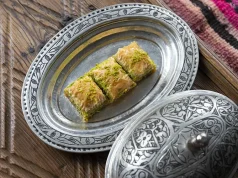Europe’s culinary landscape is as diverse as its cultures, with each country offering a unique taste of its history and tradition through baked goods. From the flaky layers of French croissants to the rich, sweet flavors of Eastern European pastries, this journey across the continent promises to satisfy every palate and introduce you to the world of European baking at its finest. For those looking to explore this rich tapestry of flavors in more depth, private tours to Portugal can offer an exclusive insight into the country’s unique contribution to Europe’s bakery traditions, where you’ll discover the likes of Pastéis de Nata among other local delicacies, making your culinary exploration an even more personal and unforgettable experience.

In France, the bakery is a cornerstone of daily life, with the croissant reigning supreme. This buttery, flaky pastry, which originated in Austria, found its fame and perfection in the French boulangeries. The secret lies in the meticulous process of layering dough and butter, then folding and rolling repeatedly to create its iconic layers. Each bite, crisp and tender, encapsulates the essence of French baking philosophy: simplicity coupled with the highest quality ingredients. Another gem in the French pastry crown is the éclair, a light choux pastry filled with rich cream and topped with glossy chocolate icing, showcasing the elegance and finesse of French patisserie. For those embarking on the London to Paris train, a visit to a traditional French bakery becomes an essential experience, offering a taste of France’s culinary excellence shortly after their arrival.

Venturing into Italy, the land known for its rich culinary heritage, one cannot overlook the sweetness of its pastries. The cannoli, a staple of Sicilian cuisine, features crispy, fried dough tubes filled with sweet, creamy ricotta. Traditionally garnished with pistachios, candied fruits, or chocolate chips, cannoli offer a delightful contrast of textures and flavors. Another Italian masterpiece, the tiramisu, combines coffee-soaked ladyfingers with a decadent mascarpone cheese mixture, dusted with cocoa powder for a rich, indulgent treat. Though not baked in the traditional sense, its layers are a testament to the intricate assembly and flavors that characterize Italian desserts.
Spain brings a different palette of tastes and textures with its churros, a beloved treat across the country. These deep-fried dough pastries, often enjoyed for breakfast or as a snack, are best served hot, dusted with sugar, and dipped in thick, dark chocolate. The crunchy exterior and soft interior create a simple yet irresistible treat that reflects the Spanish joy of life. Another Spanish delight, the ensaimada, hails from the Balearic Islands. This soft, sweet pastry is shaped into a spiral and dusted with powdered sugar, sometimes filled with cream or apricot jam, offering a taste of the Mediterranean sunshine in every bite.
Heading north, the Scandinavian countries present their version of baked excellence with the Danish pastry. Known in Denmark as ‘wienerbrød’, reflecting its Viennese origins, this pastry has become a staple of Danish bakeries. Its layers of flaky, buttery dough, filled with custard, jam, or marzipan, and often topped with icing or nuts, make for a delightful breakfast or snack, perfectly accompanying a cup of strong coffee. Sweden’s contribution to the pastry world, the kanelbulle, or cinnamon roll, is a soft, sweet bread flavored with cinnamon and cardamom, then glazed with syrup and sprinkled with nib sugar, embodying the coziness of Scandinavian ‘fika’ – a coffee break meant for socializing and indulging in sweets.
Crossing into Eastern Europe, Poland offers the paczki, a rich, yeast-raised doughnut traditionally filled with rose hip, prune, apricot, or raspberry jam and covered with powdered sugar, icing, or glaze. Consumed especially on Fat Thursday, the last Thursday before Lent, paczki are a festive treat that highlights the Polish love for indulgent, comforting sweets. Nearby, Hungary boasts its kürtőskalács, or chimney cake, a unique pastry that’s grilled on a spit, then coated with sugar and butter to create a caramelized crust. Often rolled in cinnamon, nuts, or other toppings, its warm, sweet aroma and delightful texture make it a popular street food, capturing the essence of Hungarian baking.
These baked goods, from the delicate croissants of France to the hearty paczki of Poland, offer a window into the diverse culinary traditions of Europe. Each pastry, with its own history and cultural significance, tells a story of the people and places from which it originates. As you travel across Europe, whether in reality or through the pages of a cookbook, indulging in these treats allows you to partake in a shared European heritage of baking that transcends borders, uniting the continent in a celebration of flavor, craftsmanship, and the simple joy of a delicious bite.
In the United Kingdom, the tradition of baked goods takes a comforting turn with the beloved scone. Quintessentially British, scones are the heart of the afternoon tea experience, served warm with clotted cream and strawberry jam. This simple yet versatile bake can be found ranging from the classic plain recipe to variations with raisins, cheese, or even dates. The art of making the perfect scone – light, fluffy, and just slightly crumbly – is a matter of national pride, reflecting the British penchant for understated elegance. Equally noteworthy is the Eccles cake, a flaky pastry filled with currants and spices, hailing from the town of Eccles. It’s a testament to the British love for pies and pastries, combining sweetness with a hint of spice, and making for a delightful treat that pairs wonderfully with a cup of tea, embodying the comforting essence of British baking culture.
To enhance the exploration of Europe’s best baked goods, consider integrating the historical and cultural backgrounds of each pastry, highlighting how traditional techniques and local ingredients shape their unique flavors. Incorporating anecdotes or insights from culinary experts could add depth, personalizing the narrative with stories of heritage and innovation. Exploring the impact of modern dietary trends, like the inclusion of gluten-free or vegan options, could provide a contemporary angle, showing the evolution of these timeless treats. Lastly, offering practical information, such as recipes or notable bakeries, could turn the article into an engaging guide for culinary adventurers, inviting readers to not only learn about but also experience Europe’s rich pastry culture. This streamlined approach aims to enrich the narrative by blending tradition with modernity, appealing to a wide range of readers interested in the art of European baking.





